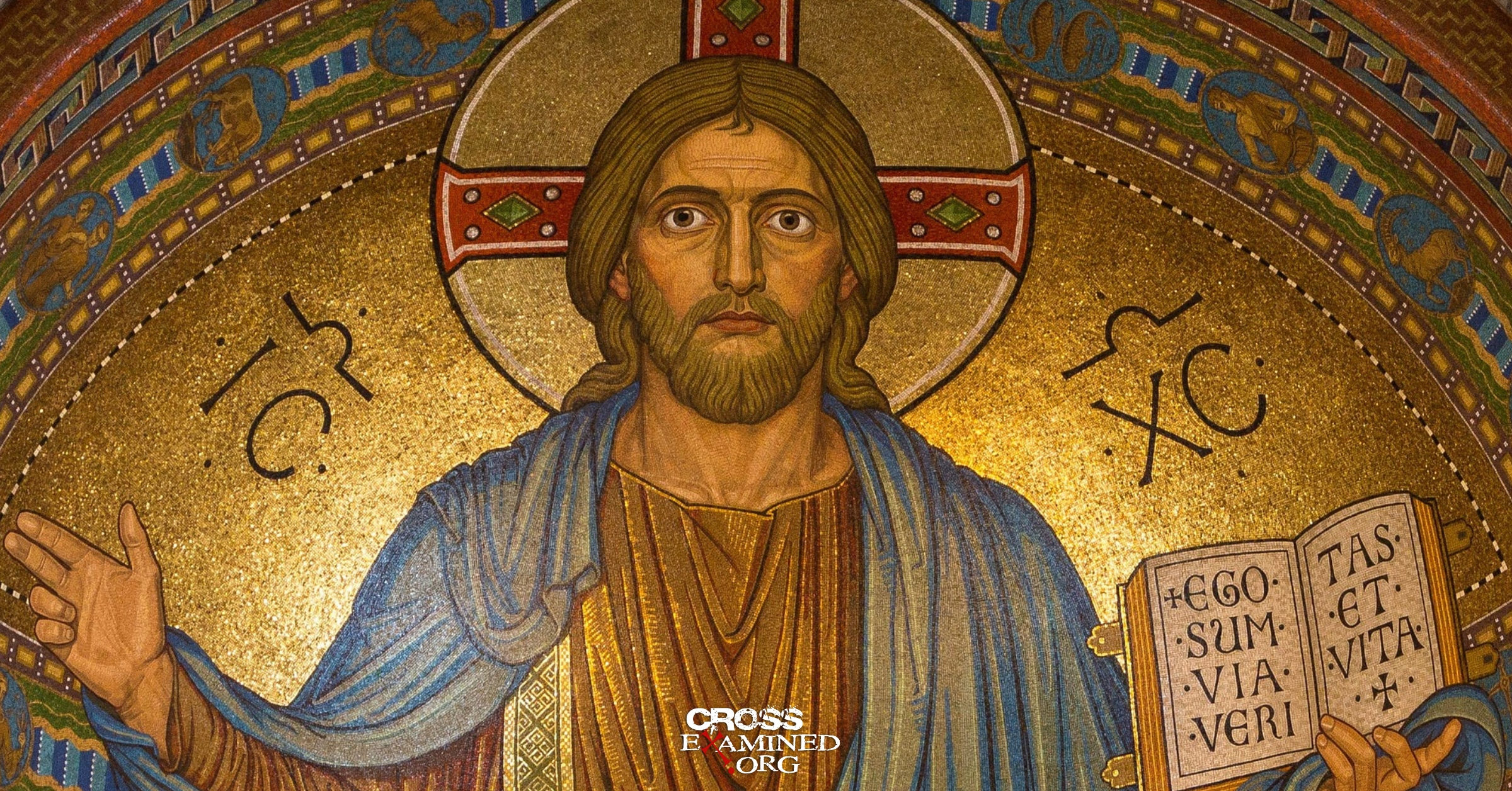The Evidence For Jesus’ Resurrection, Part 2: How To Do History
In the previous blog post, I talked about how important it was that we affirm that Jesus rose from the dead if He actually did, I warned not to let one’s dislike of Christianity’s implications get in the way of interpreting the evidence, and I warned not to let one’s naturalistic bias (provided the reader is an atheist) to not get in the way of their investigation. Be open-minded to the supernatural.
However, what kind of historical evidence could there be for the resurrection of Jesus? Where does one find this evidence? How does one come up with it? It’s important to understand how historical conclusions are derived. It’s important to understand the reasoning behind the case for Jesus’ resurrection, that is; the procedure at which we will come to the conclusion: Jesus of Nazareth rose from the dead. If one doesn’t understand the methodology of how historians come to this conclusion, then one won’t be convinced and might even respond with a straw man argument.
What Is The Minimal Facts Approach?
The approach to evidentially demonstrating Christ’s resurrection I will be taking in this series is what’s come to be known as “The Minimal Facts Approach”. New Testament scholars Gary Habermas and Michael Licona use this method in their book The Case For The Resurrection Of Jesus.
The Minimal Facts Approach only employs data that meet two criteria:
1: It has a lot of historical evidence in its favor.
2: It is nearly universally accepted by nearly all scholars and historians who study this subject, even the skeptical non-Christian scholars.
A minimal fact, in order to be a minimal fact, must meet those two criteria. It must be very well attested and have near universal acceptance among scholars and historians who study this subject, even the skeptical non-Christian scholars.
The Minimal Facts approach argues for the historicity of the resurrection by a two-step process:
1: We give a list of facts and the historical evidence that proves they are facts.
2: We arrive at the resurrection as the best explanation of those facts by means of abductive reasoning.
Historical Methodology, Not “Quoting The Bible To Prove The Bible”
With regards to that first step, you’ll notice that I appeal to both extra-biblical sources as well as The New Testament documents. This is where non-Christians get hung up. They think that just because I cite a book or letter from The New Testament that I’m somehow “begging the question” or “reasoning in a circle” because they say that I’m “Quoting from The Bible to prove that The Bible is true.” They think I’m saying that because, for example, The Bible says that the tomb of Jesus was empty, that therefore Jesus’ tomb was empty. They think I’m arguing like this: “The tomb of Jesus was empty because The Bible clearly says it was empty, and The Bible’s the word of God, so you know that what it says is true!”
However, that’s not at all how I’m arguing for the factuality of the minimal facts. Yes, I use The New Testament documents, but I am not citing from them as divinely inspired scripture. Rather, I’m treating the New Testament documents as I would any other document from ancient history: as a set of ancient documents that claim to be telling us about historical events. I do not presuppose the inspiration, inerrancy, or even the general reliability of The New Testament when I appeal to it.
When I use the New Testament documents, I treat them just as a historian would any secular document. And I do that by applying the “principles of historical authenticity.” When historians are examining documents and are trying to figure out whether what those documents say are true, they will employ certain principles or criteria which will make a recorded incident more likely true than it would be without the use of that principle. By doing this, they can come to a conclusion with some degree of certainty that what they’re reading about actually happened.
These principles, known as “the principles of historical authenticity” or the “criteria of authenticity” are the following: the principle of multiple attestation, the principle of embarrassment, the principle of early attestation, the principle of enemy attestation, the principle of historical fit, the principle of dissimilarity, and the principle of multiple literary forms. I will be applying these to the gospels and New Testament epistles to see what kind of data we can extract about what happened to Jesus. This procedure isn’t peculiar. Historians do this all the time when examining secular documents. Now, let me explain these criteria:
The Principle Of Embarrassment — If a document records an event that is embarrassing to the one writing it, embarrassing to someone the writer cares about, weakens an argument he’s trying to make or hurts his cause in any way, it is more likely to be true than false. This principle is built on the common sense belief that if people are going to make up lies, it’s going to make themselves look good, make their loved ones look good, strengthen their arguments, or helps their cause. No one makes up lies to make themselves or a loved one look bad, or to weaken an argument they’re trying to make.
Here’s a hypothetical example of this principle in play. Let’s say we had a letter written by George Washington, the first president of The United States, and in that letter, he records an incident where he was riding a horse along the countryside, and he had a bad case of diarrhea, and he soiled himself. Then he says that he went behind a tree, removed his undergarments, and went commando for the rest of the day. A historian examining that document would conclude that this story is more likely to be true than not because such a story is embarrassing to the one who wrote it (i.e., George Washington). This would be to apply the principle of embarrassment to the letter. Now, no such letter written by George Washington exists (at least to my knowledge). This is merely an illustration to help you see how a historical investigation is done.
The Principle Of Multiple Attestation — The more independent sources an event is mentioned in, the more likely it is to be true. The more independent sources you have reporting an event, the smaller the odds it is that the event is made up since it’s highly unlikely for multiple people to concoct the same fiction.
Let’s say that not only did Washington write about his embarrassing case, but three of his friends each wrote documents recounting the incident. If this were the case, the incident of Washington soiling himself would be even more likely to be true. Why? Because of the principle of multiple attestations. When you have two or more independent sources record an incident, it’s far more likely to be true than not, because the more and more independent sources an event is mentioned in, the less and less likely it is to be made up. If you had three or four different sources recording the same event, what are the odds that all four sources are making up the same thing? So on top of the principle of embarrassment, we would add multiple attestations to this incident, and it would be even more likely that Washington soiled himself out in the countryside.
The Principle Of Early Attestation — The earlier a document dates relative to the event the document purports to describe, the more reliable the account. The earlier a document is, the less time there was for legend and embellishment to creep in.
The hypothetical documents of Washingtons’ friends were written only 2 years after the event. This short timescale makes it less likely that they would embellish things and accurately recall the day.
The Principle Of Enemy Attestation — If Document X is saying something that benefits a person, message, or cause, that X is hostile or opposed to, we have an indication of authenticity.
This principle’s logic runs mirror to The Principle of Embarrassment’s. The logic behind this principle is that people who hate you are not going to make up lies to make you look good. People who are opposed to your cause are not going to make up lies that help it.
The Principle Of Historical Fit — If details in an account conform to well established historical facts of the period, this makes the event in said account more credible.
For example, if Washington’s letters and the writings of his 3 friends described the countryside accurately, described what kind of trees were in bloom in the area that they said they were horseriding in, described the kind of clothes the people back in town wore, etc. these things would heighten the credibility of the accounts.
The Principle Of Dissimilarity — As far as I know, this principle is solely used in examining The New Testament. This principle says that If an event or saying of Jesus cannot be derived from the Judaism that preceded him or the Christian church that came after him, then it’s highly unlikely that the church made up the saying and attributed it to Jesus.
The Principle Of Multiple Literary Forms — Greco-Roman Biographies, creeds, miracles, didactic (these would be sermon summaries), apocalyptic. These are the genres of writings in the first century Roman-Palestinian world. If an event can be found in writings that fall into more than one genre, then it’s more likely to be true than not.
So, even though I’ll be appealing to the New Testament documents, I won’t be “quoting from The Bible to prove The Bible.” Instead, I’ll merely be treating The New Testament documents like I would any other set of ancient documents. By the way, even non-Christian historians treat The New Testament this way! People like Bart Erhman and Gerd Ludemann come to conclusions about the historical Jesus by applying these “criteria of authenticity” to the New Testament documents. As resurrection expert and New Testament scholar Gary Habermas once said: “If you don’t use The New Testament, the skeptics will.”[1] So here’s something to ponder; if the skeptics are allowed to use the New Testament, why aren’t Christian Apologists? If atheists can say “This aspect of Jesus is historical because of criteria of authenticity X,” then why can’t I? These non-Christian historians don’t presuppose the inspiration or inerrancy of scripture. They’re certainly not “Quoting The Bible to prove The Bible.”
Now, when one applies these criteria, what one comes up with are several facts which undergird the inference to the resurrection. These 5 facts are
1: Jesus died by crucifixion.
2: Jesus’ tomb was found empty the following Sunday morning.
3: Jesus’ disciples believed that Jesus appeared to them after His death.
4: A church persecutor named Paul converted to Christianity on the basis of what he perceived as an appearance of the risen Jesus.
5: A skeptic named James converted to Christianity on the basis of what he perceived as an appearance of the risen Jesus.
According to Doctor Habermas, these 5 facts meet the two criteria required to be a minimal fact. They both have a lot of historical evidence in their favor (as we’ll see in the upcoming chapters), and moreover, they are nearly universally accepted by scholars and historians who study ancient Palestinian history, even the skeptical ones.[2]
By the way, let me just get a quick word in about these criteria regarding how they can be misused. Some people have tried to disprove things about Jesus through the negative use of these criteria. For example, they’ll say that because some event or saying of Jesus is not multiply attested or not embarrassing, that therefore, it isn’t historical. You can’t use the criteria in that way. They can only be used positively to show that something is true, they can’t be used negatively to show something isn’t true. Just because something isn’t embarrassing to an author, that doesn’t mean it isn’t true. Just because something is found in only one source, that doesn’t mean it isn’t true. Just because something isn’t attested by an enemy source, that doesn’t mean it isn’t true. The criteria only say that if something is multiply attested, embarrassing, enemy attested, etc. then that means it probably happened. Think about it this way; Event X may be mentioned in only one source and therefore is not multiply attested. However, Event X may be embarrassing to the author. So even though event X isn’t mentioned by two or three other writers, we’d still be justified in concluding X happened on the basis of the criterion of embarrassment. Or something may not be embarrassing, but it may be mentioned by two or three independent writers and ergo is multiply attested.
Abductive Reasoning
Once the 5 facts are established through the historical, methodological approach, we then use abductive reasoning to arrive at the resurrection as the best explanation of those 5 facts. Now, what is abductive reasoning? Abductive Reasoning, also known as inferring to the best explanation, is a form of reasoning that takes a collection of evidence and eliminates the list of possible explanations for that evidence until you arrive at only one remaining possibility. If this remaining possibility has the power to explain all of the evidence in question and if it’s truly the only one left, then the most logical conclusion is that this possible explanation is the true explanation.
In logical form, it looks like this:
1: Either P, Q, or R.
2: Not P or Q.
3: Therefore, R.
Don’t Worry About Alleged Contradictions In The Gospels
In conversations with skeptics about the evidence for the resurrection, almost inevitably, someone will bring up the charge that the gospel accounts are contradictory. They’ll say “How can we believe what the gospels tell us about Jesus!? They’re hopelessly filled with contradictions!” Or they’ll quote Bart Ehrman saying:
“Did he [Jesus] die on the day before the Passover meal was eaten, as John explicitly says, or did he die after it was eaten, as Mark explicitly says? Did he die at noon, as in John, or at 9 a.m., as in Mark? Did Jesus carry his cross the entire way himself or did Simon of Cyrene carry his cross? It depends which Gospel you read. Did both robbers mock Jesus on the cross or did only one of them mock him and the other come to his defense? It depends which Gospel you read. Did the curtain in the temple rip in half before Jesus died or after he died? It depends which Gospel you read. Or take the accounts of the resurrection. Who went to the tomb on the third day? Was it Mary alone or was it Mary with other women? If it was Mary with other women, how many other women were there, which ones were they, and what were their names? Was the stone rolled away before they got there or not? What did they see in the tomb? Did they see a man, did they see two men, or did they see an angel? It depends which account you read.”[3]
Listening to Eherman or another unbeliever list these supposed contradictions off can seem a little overwhelming, and some apologists feel tempted to respond to every one of them and provide some sort of plausible harmonization scenario for each alleged discrepancy. However, in a minimal facts approach, we need not bother with any alleged contradictions in the gospel accounts. For one thing, while I think apologists should provide scenarios to harmonize these differences, since I take biblical inerrancy to be very important (and I think Norman Geisler does a great job at this in his book The Big Book Of Bible Difficulties), nevertheless, since inerrancy isn’t something being presupposed in our case, we can ignore any errors The New Testament may or may not have made.
Moreover, I want you to notice something: all of these discrepancies are in the secondary details, not the primary details.
The gospels are completely in harmony when it comes to the primary details. All 4 gospels agree on the following facts:
Jesus was crucified in Jerusalem on Passover Eve under Pontius Pilate at the instigation of the Sanhedrin, and afterward, he was buried in a tomb owned by Joseph of Arimathea, which was sealed by a huge round stone. The following Sunday morning, at least one woman went to the tomb and found it empty. Jesus then appeared to the women and to the disciples alive.
All four Gospels attest to these facts.
The only places that seem to be discrepancies are in the peripheral details, which don’t really make an impact on the story. For example, who went to the tomb? One woman, or several? How many angels were at the tomb? One angel or two? Do the answers to these questions really matter in the overall scheme of things? No. If the gospels contradict each other, they only do so in the minor, secondary, peripheral details. They’re completely harmonious in the core details of the story.
Dr. William Lane Craig said “Historians expect to find inconsistencies like these even in the most reliable sources. No historian simply throws out a source because it has inconsistencies”[4] and he’s absolutely right. Historians look at whether accounts harmonize in the primary details. If they conflict only in the peripherals, they don’t throw the sources out. Let’s use a non-biblical example to demonstrate this point.
When the Titanic sank, there were differing accounts as to how it sank. Some said the Titanic went down in one piece; others said it broke in half and went down. Some said people continued to play music as the ship sank, others said there was no music. Some said there were shootings happening when the Titanic was sinking, but others disagreed. How in the world could eyewitnesses not agree on these things? I don’t know! But I don’t hear anyone claiming that because of these discrepancies in the eyewitness accounts here that therefore the Titanic didn’t sink.[5] Eyewitnesses may differ as to whether the Titanic broke in half, but they all agreed that it sank. The gospel authors may disagree about how many women went to the tomb, but they all agree that the tomb was empty. The gospel authors may disagree as to how many thieves ridiculed Jesus at His crucifixion, but they all agree that Jesus was indeed crucified.
Objection: But The New Testament Writers Were Biased!
Some non-Christians would object to me using The New Testament even if they fully understand that I’m not treating it like divinely inspired scripture. They say we can’t trust what The New Testament writers wrote because they were biased. They said that they have an invested interest in writing down the things they wrote down. They say it’s propaganda. It’s a religious text. It’s meant to be a tool for converting people and nothing more. So, therefore, these non-Christians argue, we should only look at extra-biblical sources in trying to figure out the truth about what happened to Jesus.
But this argument doesn’t work for three reasons. First of all, everyone is biased to some degree or other. Jews have an invested interest in writing about the Holocaust (namely to try to prevent such an atrocity from ever happening again), and African Americans have an invested interest in writing about the unfairness of slavery, so rejecting what a document says because they’re supposedly biased is just fallacious. Basically, it’s just another example of the ad hominem fallacy (rejecting what a person says as true simply because of who they are). If you’re going to reject a source on these grounds, you would throw out every history book ever written. In fact, you’d have to reject not only every source from ancient history, but you’d have to reject every blog, every news site, every radio program, every newspaper, you’d basically be forced into a state of hyper-skepticism. You couldn’t even believe your mother when she tells you she loves you! I’m not joking! Isn’t she biased? No one writes about anything unless they’re interested in their subject.
Secondly, bias does not automatically mean someone is wrong. Someone can be biased, and someone can be right at the same time. In fact, ironically, bias can actually drive a person to be more accurate in their reporting. For example, one might say (and in fact, some have said) that I’m biased in favor of Christianity and that I have an invested interest in winning unbelievers to the faith and equipping believers to defend their faith. True enough. I’ve said so outright in various places on this blog. However, I would submit to you that my bias drives me to be more accurate, more truthful, and more careful in my writing. The reason is that I don’t want to discredit myself. If I even misattribute a quote to someone or take a Bible verse out of context, I’m mortified! I want to ensure that everything I say is true so that my credibility doesn’t suffer.
Thirdly, the criterion of authenticity that I mentioned several subsections ago help to establish facts as historically true regardless of whether an author has a bias or not. Multiple attestations, embarrassment, enemy attestation, etc. These can be used to extract historical pieces of information.
As Dr. William Lane Craig said, “Notice that these “criteria” do not presuppose the general reliability of the Gospels. Rather they focus on a particular saying or event and give evidence for thinking that specific element of Jesus’ life to be historical, regardless of the general reliability of the document in which the particular saying or event is reported. These same “criteria” are thus applicable to reports of Jesus found in the apocryphal Gospels, or rabbinical writings, or even the Qur’an. Of course, if the Gospels can be shown to be generally reliable documents, so much the better! But the “criteria” do not depend on any such presupposition. They serve to help spot historical kernels even in the midst of historical chaff. Thus we need not concern ourselves with defending the Gospels’ every claim attributed to Jesus in the gospels; the question will be whether we can establish enough about Jesus to make faith in him reasonable.”[6]
So the criterion of authenticity does an end-run around the historical reliability of the gospels (which might be affected by a bias). Even if the most unreliable of sources, these criteria can extract nuggets of historical data. For example, one might say “X is an unreliable source, but we can still believe what it says when it reports Y because it’s embarrassing to X to mention such a thing.” or “X is an unreliable source, but X’s mentioning of Y is corroborated by several other sources, so it’s multiply attested and therefore, likely to be true.” Therefore, this objection to the use of The New Testament documents falls flat.
Summary and Conclusion
Hopefully, you now know how history is done and how the minimal facts are arrived at. Hopefully, you’ll see that the approach we apologists take when arguing for the historicity of Jesus’ resurrection isn’t a question-begging “The Bible says it! I believe it! That settles it!” kind of approach. Rather, this approach treats The New Testament documents the same way we would treat any set of ancient documents. Moreover, non-Christian historians approach the New Testament in the same way and come to the same conclusions. Using the historical, methodological approach, they agree that the minimal facts are indeed facts. They just disagree with Christian scholars on how to explain those 5 facts. That’s where abductive reasoning comes in. We need to see whether any of the proposed naturalistic explanations non-Christian scholars propose are any good. I submit to you that they are not, and only the miraculous resurrection can account for all 5 facts. Finally, we need to not get distracted by claims that the gospel accounts are contradictory. For one thing, they’re all in the peripheral details that don’t make an impact on the story. Moreover, if historians threw sources out because of such differences, little could be known about history.
Now that you know the reasoning process behind the minimal facts approaches, it’s now time to begin looking at evidence for the minimal facts themselves. Once we’ve done that, we’ll eliminate all of the possible explanations until “He is risen!” is the only one left on the table (abductive reasoning).
Notes
[1] Gary Habermas said this in a lecture at the “To Everyone an Answer: 10th Annual EPS Apologetics Conference”. The lecture was titled “The Resurrection Evidence that Changed Current Scholarship” and can be viewed on Youtube here, uploaded by Biola University’s Youtube account à https://www.youtube.com/watch?v=5znVUFHqO4Q
[2] Doctor Habermas came up with the number that around 95-99% of non-Christian scholars accept the 5 minimal facts presented above. The empty tomb, while not having such near unanimity at the other 4 facts, does have support from an impressive majority of 75% of scholars. He came up with this number by surveying the literature.
[3] (Bart Ehrman vs. William Lane Craig Debate, Is there Historical Evidence for the Resurrection of Jesus? debate transcript http://www.reasonablefaith.org/is-there-historical-evidence-for-the-resurrection-of-jesus-the-craig-ehrman).
[4] William Lane Craig, “Q&A: Inerrancy and The Resurrection,” https://www.reasonablefaith.org/writings/question-answer/inerrancy-and-the-resurrection
[5] See “Titanic: First Accounts,” by Tim Maltin (Editor, Introduction), Nicholas Wade (Afterword), Max Ellis (Illustrator), Penguin Classics
[6] William Lane Craig, “Q&A: Establishing The Gospels’ Reliability,” http://www.reasonablefaith.org/establishing-the-gospels-reliability
Original Blog Source: http://bit.ly/2JPMcUV












Leave a Reply
Want to join the discussion?Feel free to contribute!